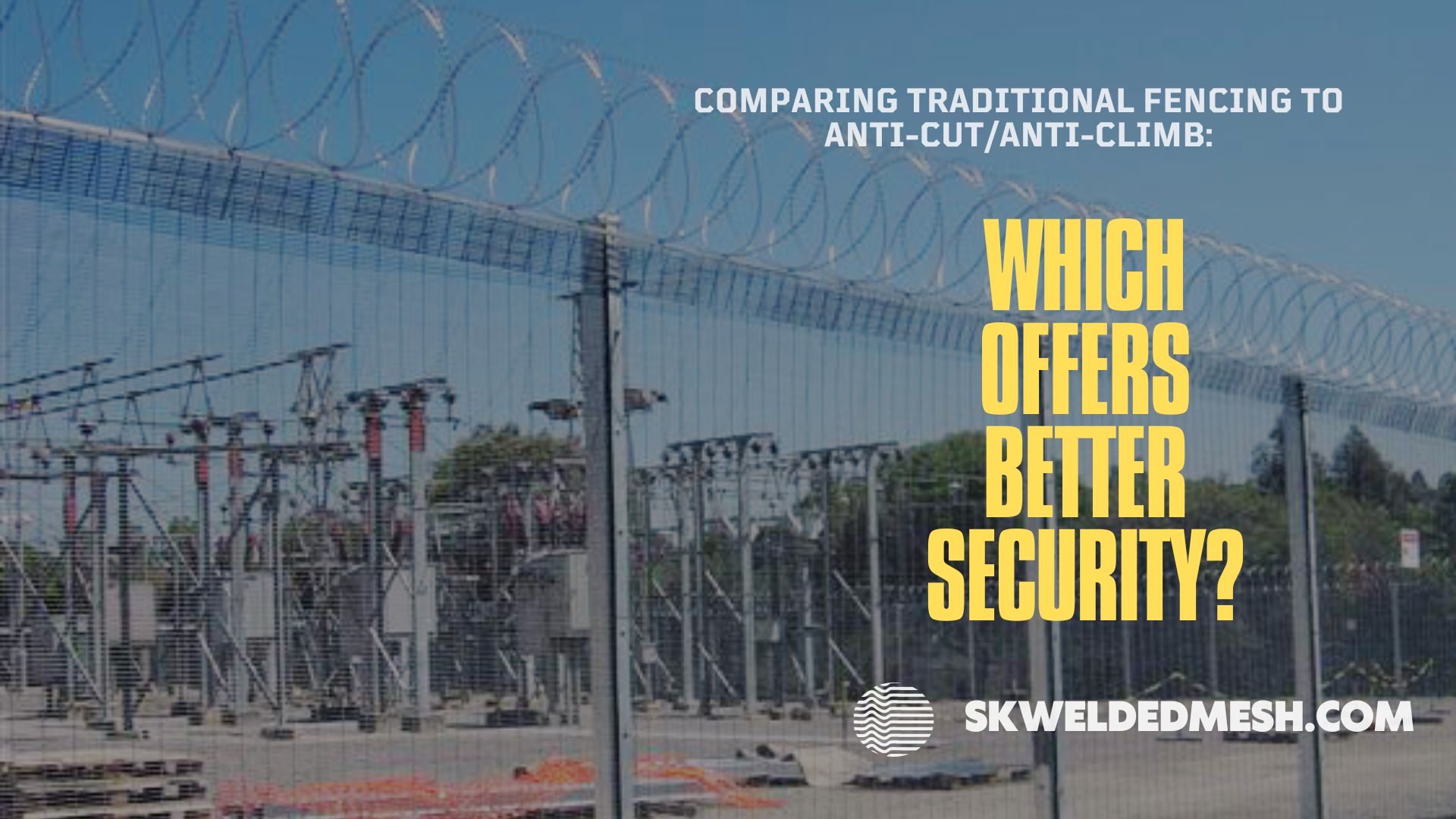

Security remains a paramount concern for homeowners and businesses alike. A sturdy fence can deter potential intruders, protect assets, and provide peace of mind. But with evolving threats, the question arises: Is traditional fencing enough, or should one consider the advanced anti-cut/anti-climb options?
Traditional fencing, a blend of wood, metal, or chain link, has stood the test of time. It primarily serves to define property lines and deliver a foundational layer of security. Here are its strengths and limitations:
Strengths:
1. Cost-Effective: Traditional fencing, being a staple for so long, benefits from established manufacturing processes. This translates to affordability. It presents a harmonious blend of cost-efficiency and reliable security for homeowners and businesses mindful of their budgets.
2. Easy Installation: The beauty of traditional fencing lies in its simplicity. Its design, often devoid of intricate patterns or complex structures, ensures a hassle-free installation. Even with basic tools and a rudimentary understanding of fencing, one can set up a traditional fence without needing professional intervention.
Limitations:
1. Vulnerability: The very simplicity that is a strength can also be a chink in its armor. Armed with the right tools, determined intruders can find ways to cut through, scale, or even dismantle parts of the fence. This makes certain traditional fences less formidable against premeditated breaches.
2. Maintenance: Especially in the case of wooden fences, the battle against nature is ongoing. Wood, being organic, is susceptible to elements like moisture, termites, and fungi. Over time, without regular upkeep, wooden fences can rot, warp, or become structurally weak. This compromises security and demands recurrent expenditures on repairs and replacements.
Anti-cut/anti-climb fencing is a contemporary solution designed to counter sophisticated threats. It’s built to resist cutting tools and deter climbers. Here’s a closer look:
Strengths:
1. Enhanced Security: The essence of anti-cut/anti-climb fencing lies in its intricate design. The gaps are too small for handholds, making climbing a daunting task. Additionally, the robust materials used can resist most cutting tools, ensuring that breaking through is a Herculean challenge for intruders.
2. Durability: Crafted from premium-grade materials, this fencing is built to last. It stands undeterred by harsh weather conditions, whether scorching sun or torrential rain. The materials undergo treatments to resist corrosion, ensuring the fence remains steadfast and untarnished for years.
3. Low Maintenance: A testament to its superior build quality, anti-cut/anti-climb fencing demands little attention post-installation. Unlike traditional counterparts, it doesn’t succumb easily to wear and tear. This translates to fewer repair sessions, saving time and resources in the long haul.
4. Modern Aesthetics: While primarily designed for security, its sleek and modern design adds a touch of sophistication to the property. It’s a testament to the fact that security and aesthetics can coexist.
5. Adaptability: One of its lesser-known strengths is its adaptability. Whether it’s a residential property, a commercial complex, or a high-security zone, anti-cut/anti-climb fencing can be tailored to suit diverse requirements.
Limitations:
1. Higher Initial Cost: Superiority comes at a price. The cutting-edge features and high-grade materials mean that the initial investment is higher than traditional fencing. However, the long-term benefits often justify the upfront cost.
2. Aesthetic Flexibility: While it boasts a modern aesthetic, customization options might be limited. Those seeking a rustic or vintage look might find traditional fencing more aligned with their design aspirations.
While traditional fencing has its merits, the security landscape has changed. For those seeking top-tier protection, anti-cut/anti-climb fencing emerges as the clear winner. Its robust design and resistance to common intrusion methods make it a worthy investment for those prioritizing security above all else.
However, the final choice depends on individual needs. If aesthetics and cost are primary concerns, traditional fencing might suffice. But for uncompromised security, anti-cut/anti-climb fencing stands unmatched.